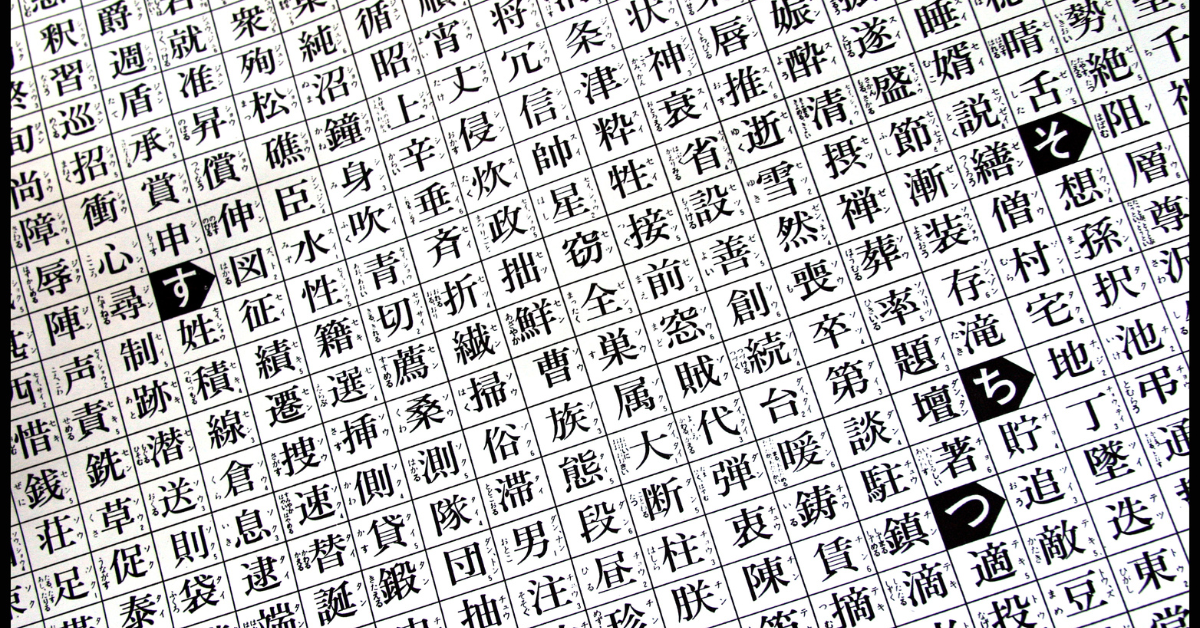Kanji originated in China and spread across Japan, Korea, and Vietnam for thousands of years. Today, they are used differently in each country but continue to play a major role in culture and education.
What Are Kanji?
Kanji are logographic characters, meaning that each symbol represents an idea or concept. For example, the character for “木” (tree) depicts a tree, and “森” (forest) shows three trees together, representing a forest.
Many kanji are created by combining a semantic element (which conveys meaning) with a phonetic element (which indicates pronunciation). For instance, the character “海” (sea) consists of the water radical “氵” and the phonetic element “毎.” This allows kanji to convey both meaning and sound at the same time.
Countries and Regions Using Kanji
| Country or Region | Current Usage | Characteristics |
|---|---|---|
| China | Still in use | Has both Simplified and Traditional forms |
| Japan | Still in use | Combined with hiragana and katakana |
| Korea | Limited use | Hangul is dominant, kanji used only in specific cases |
| Vietnam | No longer in use | Formerly used Chữ Nôm, now uses the Latin alphabet |
Kanji in China
China is the birthplace of kanji and still uses them today. Since the mid-20th century, Simplified Chinese characters have been the norm in mainland China, while Traditional Chinese characters are used in Taiwan, Hong Kong, and Macau.
- Simplified characters: easier to learn and write with fewer strokes
- Traditional characters: preserve ancient forms and hold strong cultural value
When learning Chinese, it is important to know which character system is used in your region of study.
Kanji in Japan
The Japanese writing system combines kanji, hiragana, and katakana. Kanji are mainly used for nouns, verbs, and adjectives; hiragana for grammar and inflections; and katakana for foreign words and emphasis.
Kanji in Japanese have two main readings: On-yomi (sound-based, from Chinese) and Kun-yomi (meaning-based, unique to Japanese).
| Reading Type | Example | Characteristics |
|---|---|---|
| On-yomi | 山=San, 学校=Gakkō | Derived from Chinese pronunciation |
| Kun-yomi | 山=yama, 行=iku | Native Japanese reading |
This dual reading system makes Japanese kanji challenging for learners, but it also provides richness and flexibility in expression.
Kanji in Korea
For centuries, Korea relied on kanji (called Hanja) for official documents and education. However, after the creation of Hangul in the 15th century, kanji gradually declined.
Today, Hangul is dominant in everyday use, while kanji appear occasionally in personal names, academic terms, and historical texts. For learners of Korean, knowing kanji can deepen vocabulary understanding, especially in legal and historical contexts.
Kanji in Vietnam
Vietnam was heavily influenced by Chinese culture and used kanji in government and education. Later, the country developed Chữ Nôm, a modified version of kanji used to represent the Vietnamese language.
In the 19th century, under French colonial rule, the Latin-based Quốc Ngữ writing system was introduced and has since become the standard.
| Era | Script | Characteristics |
|---|---|---|
| Ancient–Medieval | Kanji | Used in government exams and literature |
| Medieval onward | Chữ Nôm | Modified kanji for Vietnamese writing |
| Modern era | Quốc Ngữ | Latin alphabet, current standard |
The Structure and Meaning of Kanji
Kanji are often pictorial in origin, which makes them easier to remember when linked to images.
| Kanji | Origin | Meaning |
|---|---|---|
| 日 | Shape of the sun | Sun, day |
| 月 | Shape of the moon | Moon, night |
| 木 | Shape of a tree | Tree |
| 休 | Person + tree | Rest (a person leaning on a tree) |
By studying kanji in this way, learners can connect characters to stories and images, rather than memorizing them as abstract symbols.
Tips for Learning Kanji as a Foreigner
Foreign learners often find kanji difficult, but with the right methods, they can master them more effectively.
- Focus on radicals – Radicals like “氵” (water) or “火” (fire) provide hints about meaning.
- Connect learning to daily life – Use signs, menus, and packaging to study kanji in real contexts.
- Practice a little every day – Learning 10 characters daily builds steady progress.
- Write them out – Writing reinforces both form and meaning in memory.
Useful Kanji for Living in Japan
For foreigners living in Japan, knowing some basic kanji is very helpful.
| Category | Example | Meaning |
|---|---|---|
| Transportation | 駅, 道, 出口 | Station, road, exit |
| Shopping | 円, 店, 本 | Yen, shop, book |
| Healthcare | 病, 薬, 休 | Illness, medicine, rest |
| Daily life | 水, 火, 日 | Water, fire, day |
Conclusion
Kanji are one of the oldest writing systems in the world, born in China and later adapted in Japan, Korea, and Vietnam. Today, they remain vital in China and Japan, while holding historical importance in Korea and Vietnam.
For foreign learners, kanji may seem complex at first, but by understanding their origins, structure, and cultural significance, studying them becomes not only easier but also enjoyable. Learning kanji is more than just memorizing symbols—it is a way to discover the culture and history of East Asia.






